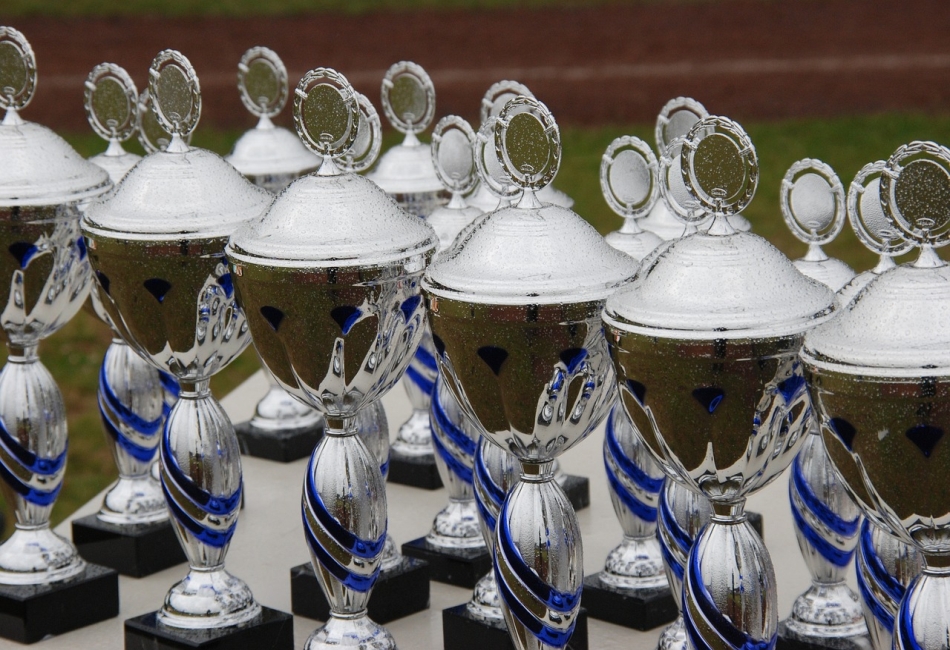In the modern competitive corporate world, rewards and recognition are priceless. They motivate workers and encourage contributions. Custom trophies have gained traction for their value and irreplaceable objective. Custom trophies carry years of resilience, hard work, and dedication.
Many companies have revolutionized their award-offering solutions. They create bespoke trophy designs that exhibit unmatched exquisiteness. You will discover trophies made of jade and optical crystal glass. They stand out for their unmatched elegance and clarity, recognizing achievements and performance. People leverage these trophies to celebrate sporting triumphs, corporate success, and academic excellence.
The following is a step-by-step guide on how professionals make custom trophies.
1. Conception and Design
The initial stage for creating a custom trophy involves conception and design. Design teams consult the client to understand the purpose. The particular reason for the best glass awards determines the design and shape. The initial consultation stage requires selecting the ideal material.
Professionals use the details acquired from the clients to develop visual replicas using CAD or Adobe Illustrator. The digital designs allow customers to screen the logo integration, size, text placement, and shape before production. The iterative and concerted approach ensures the trophy exhibits your brand identity and purpose.
2. Choosing the Best Material

Material selection is the next stage in creating purposeful custom trophies. The material type influences the appearance, durability, and impression. Customers seeking high-visual clarity and longevity in trophies should consider optimal crystal. The material has a flawless finish and strength. Hardwoods and metals are essential for delivering a robust natural and traditional elegance. They are perfect for awards that symbolize prestige and heritage.
The purpose of the award determines the material choice. Solid metal and lead crystal are more expensive, but acrylic and other cheaper options appeal to recipients without compromising the budget. Trophy designers can polish and shape acrylic to match glass appeal while maintaining light and durable performance. Jade glass and other materials with distinctive visual features add a unique touch to the design. You want a material that balances aesthetics, cost, and durability.
3. Proper Cutting and Shaping
The cutting and shaping phase begins after design approval. It transforms the digital concept into a tangible product. Converting the designs into practical shapes requires several pieces of equipment. Many professionals use laser cutters, waterjet machines, and CNC routers. These machines ease the process. They make clean edges, ensuring every piece fits correctly. The tools can handle multiple materials and cut custom shapes.
Professionals utilize advanced technology to ensure uniformity and pristine craftsmanship. They make custom casts and molds for 3D and curved elements in metal, acrylic, and resin. Also, you can create creative and sculptural designs when making specialized trophies.
4. Customization and Engraving
Professionals must customize and engrave the designs into meaningful trophy pieces. Personalized pieces are more impressive and unique. Laser engraving entails etching logos and text onto the trophy surface. The technique ensures a clean and professional finish suitable for diverse materials. Engraving improves the permanence and accuracy of the custom award, ensuring it can commemorate achievements, names, and titles.
Sandblasting is the most valuable tool for shaping glass and crystal. It helps create frosted, high-contrast designs. Many professionals use abrasive particles and pressurized air to etch the surface to create an elegant and textured appeal.
UV printing helps create photo-quality graphics and vibrant colors. The machine applies ink to the trophy surface, curing it with ultraviolet light. You get full-color images and logos. These methods are necessary to ensure the highest customization degrees and convert standard trophies into exclusive recognition symbols.
5. Assembling Process

After designing and cutting material pieces, assemble everything. Edge the components of multi-material trophies. You should understand the material architecture. Attach the bases to establish a solid foundation for the other trophy components. Most custom trophy bases are acrylic and wood pieces. Professionals bond these to the body with mounting hardware or adhesives.
Glue the best decorative trims, columns, and plaques to the award. The proper way to bolt and glue your materials depends on the compatibility of materials and designs. Many professionals leverage figurines, medallions, and nameplates for better visual appeal. These materials can make your trophy’s purpose clear.
Using the best add-ons can highlight the recipient’s achievements. It can add character and appeal to the trophies. Ensure you assemble all parts correctly to achieve a better-looking and striking piece. Proper assembly leads to accurate alignment and aesthetic integrity.
6. Quality Check and Polishing
After assembling the trophy, polish and check its quality. The completed project should meet the highest quality standards. Polish your glass and crystal pieces on hand to boost clarity. It beautifies your trophy, making it stand out. Polishing also removes scratches and residue that impact the quality of your trophy.
Use smoothing tools to remove sharp corners on the edges. Smoothing the edges refines the piece, making it exciting to handle. Run a thorough inspection of the completed piece to evaluate the accuracy of the engraving. Evaluate components assembled for accuracy and efficiency.
7. Proper Packaging

After creating and validating the quality, package your trophy. Packaging adds a protective layer to the finished product, enhancing its presentation. You can discover products wrapped in bubbles, soft cloth, or foam. Sturdy boxes hold the trophies, fitting correctly to reduce movement.
Velvet and satin boxes enhance the quality of the presentation. They shield the awards against harsh elements and make the unboxing experience rewarding. Award recipients can always enjoy the moment of the reception. Thoughtful packaging ensures the trophy arrives in the most presentable condition, leaving a lasting impression.
Wrapping Up
Trophies are integral for celebrating personal achievements, corporate milestones, and victories. Creating a custom trophy adds to the value of the celebration. Creative and unique creations emphasize and make each piece stand out.
Professionals can create beautiful and functional trophies. They apply their creativity and knowledge to develop desirable trophies. Designers are crafty and precise in their creations. They experiment with diverse concepts and designs to establish valuable trophy pieces. They can help you pick the best materials for each project.
They cut and engrave the materials to the sizing and specifications of the desired trophy award. Additionally, designers polish the completed piece, check for quality, and package the product correctly.
